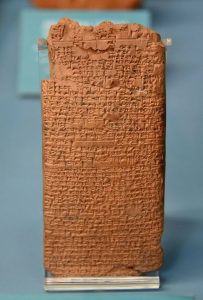This week’s assignment is to define a relatively complex term for a specific audience whom don’t have technical knowledge of the term. The term will be explained by providing parenthetical, sentence and expanded definitions. The objective is to learn how to cater to non-technical readers by providing a concise and detailed definition. As a math major, I have come across the word algorithm many times and decided to define the word for this assignment.
Term: Algorithm
Situation: I will be teaching a course on linear equations to a group of students. The class about linear equations will be using multiple algorithms throughout the course. As there are many different types of algorithms and many people don’t realize their everyday life includes the use of algorithms. I will prepare a definition for the word algorithm.
Parenthetical Definition: An algorithm (description of a set of steps) is used to solve a mathematical computation.
Sentence Definition: An algorithm is a procedure consisting of a finite number of steps that describes how to perform a task, that is used to solve a mathematical problem.
Expanded Definition:
What are Algorithms?
An algorithm is a procedure that consists of a set of steps that will be used to solve a problem. Algorithms have an important place in all mathematic curriculums. Today, algorithms are used in many different branches of sciences like math, computer science, chemistry and physics. Without realizing it, we also use algorithms in our everyday life. The reason why we use algorithm is because it is about finding efficient ways to do math.
What is the origin of Algorithm?
The Babylonian clay tablets are the world’s first known algorithm dating back to around 1600-1800 BC. However, it was not discovered until 1972 when mathematician and computer scientist Donald E. Knuth published an English translation of some of the Babylonian clay tablets.

| (Fig. 1) This is an image of the Babylonian Clay Tablet with tiny inscriptions made. Years later it was translated and found to be a sophisticated method of mathematics. |
The word algorithm is derived from a Persian scientist, astronomer and mathematician from the 9th century named Muhamad ibn Mūsā al-Khwārizmī who is often known as “The father of Algebra”. Muhamad ibn Mūsā al-Khwārizm, was indirectly responsible for the creation of the term Algorithm. In late medieval Latin, the corruption of his name, “algorismus” meant “decimal number system”. But during the 17th century, the french changed the word to “algorithme”. The English later adopted the french and in the late 19th Century the word “algorithm” took on the meaning of what it is today.
What are the Characteristics of Algorithms?
An algorithm consists of a set of steps that will be used to solve a specific problem. This applies to not only computers and machines but also humans. There are three important characteristics an algorithm must have to be considered valid.
The three characteristics are:
- The number of steps in an algorithm should be finite.
- The steps should be well-defined and thus no unambiguity.
- The algorithm should be effective. The set of steps determined in the algorithm should be solving what needs to be solved.
Where are algorithms used?
Algorithms are used by everyone all the time even when we don’t even realize it. You may not notice, but you use algorithms every day. The recipe you used for baking, or the path for getting from point A to point B all require the use of algorithms. Even just the act of searching for a recipe or using google maps will use algorithms.
Some algorithms are more important than others because they help define what math and computing is today. One type of algorithm that is still used today is Euclid’s Algorithm (Fig. 2). Created in 300BC and one of the earliest algorithms every created. This Algorithm is probably one we have all used when we were in school. This algorithm is a procedure used to find the greatest common divisor (GCD) of two positive integers. This algorithm is also useful in more advanced mathematics applications. Another type of algorithm that is still widely used today is the boolean. It is commonly seen in mathematics, logic and coding. The boolean algorithm was created in 1847, and is widely known as the foundation of modern computer coding.

| (Fig 2.) A Flowchart of Euclid’s Algorithm on the steps taken to find the greatest common divisor of two numbers |
Works Cited:
“File:Euclid flowchart.svg.” Wikimedia Commons, the free media repository. 8 Jan 2019, 12:38 UTC. 22
Sep 2019, 22:59
<https://commons.wikimedia.org/w/index.php?title=File:Euclid_flowchart.svg&ol
did=334007111>.
McFadden, Christopher. “15 Of the Most Important Algorithms That Helped Define Mathematics,
Computing, and Physics.” Interesting Engineering, Interesting Engineering, 5 Sept. 2019,
www.interestingengineering.com/15-of-the-most-important-algorithms-that-helped-d
efine-mathematics-computing-and-physics.
McFadden, Christopher. “The Origin of Algorithms We Use Every Single Day.” Interesting Engineering,
Interesting Engineering, 12 Mar. 2018,
www.interestingengineering.com/origin-algorithms-use-every-day.
Prakash, Nikhil. “History of the Word ‘ALGORITHM.’” Medium, Medium, 1 July 2017,
www.medium.com/@nikhil07prakash/history-of-the-word-algorithm-5a59c2b84a1d.
Russell, Deb. “Are We Living in the Age of Algorithims?” ThoughtCo, ThoughtCo, 21 Dec. 2018,
www.thoughtco.com/definition-of-algorithm-2312354.
Leave a Reply